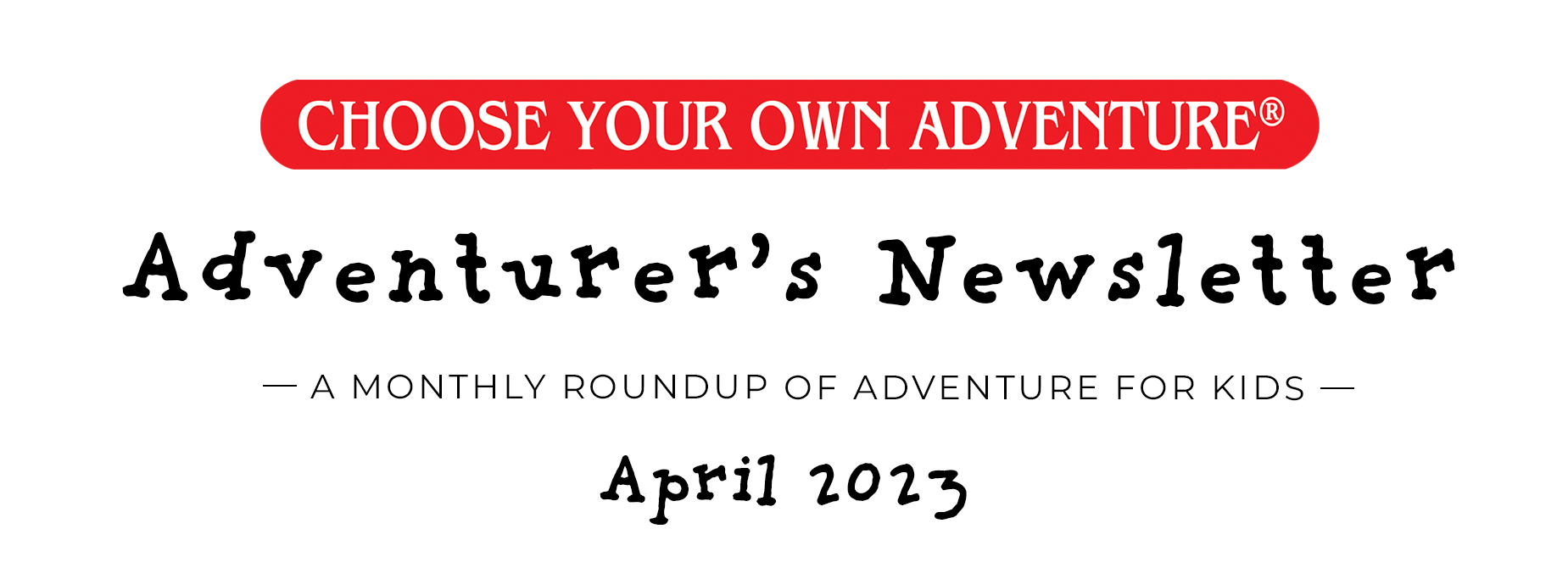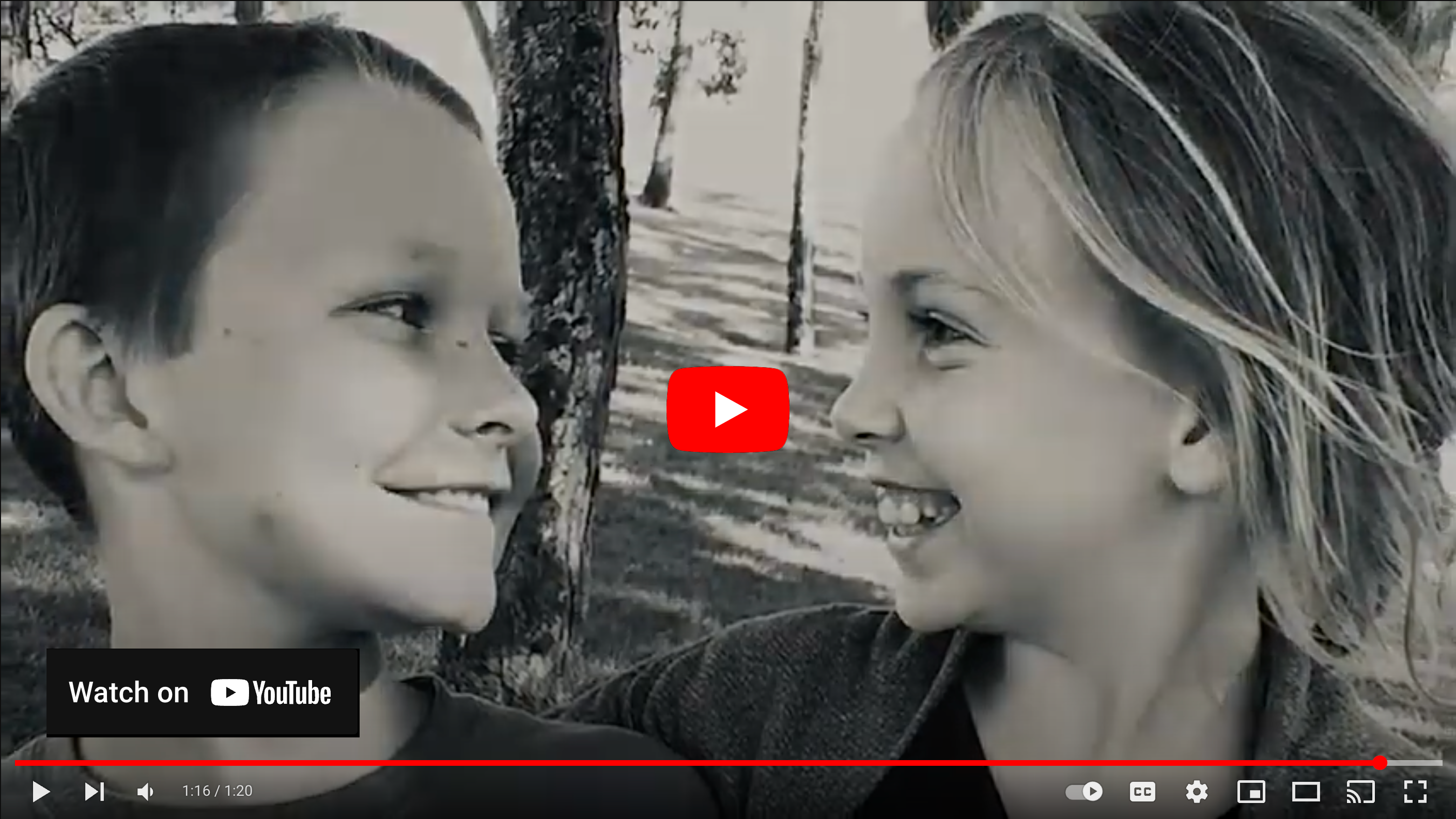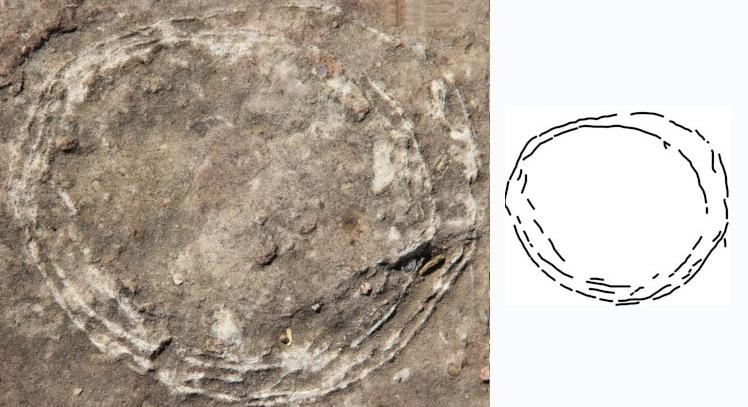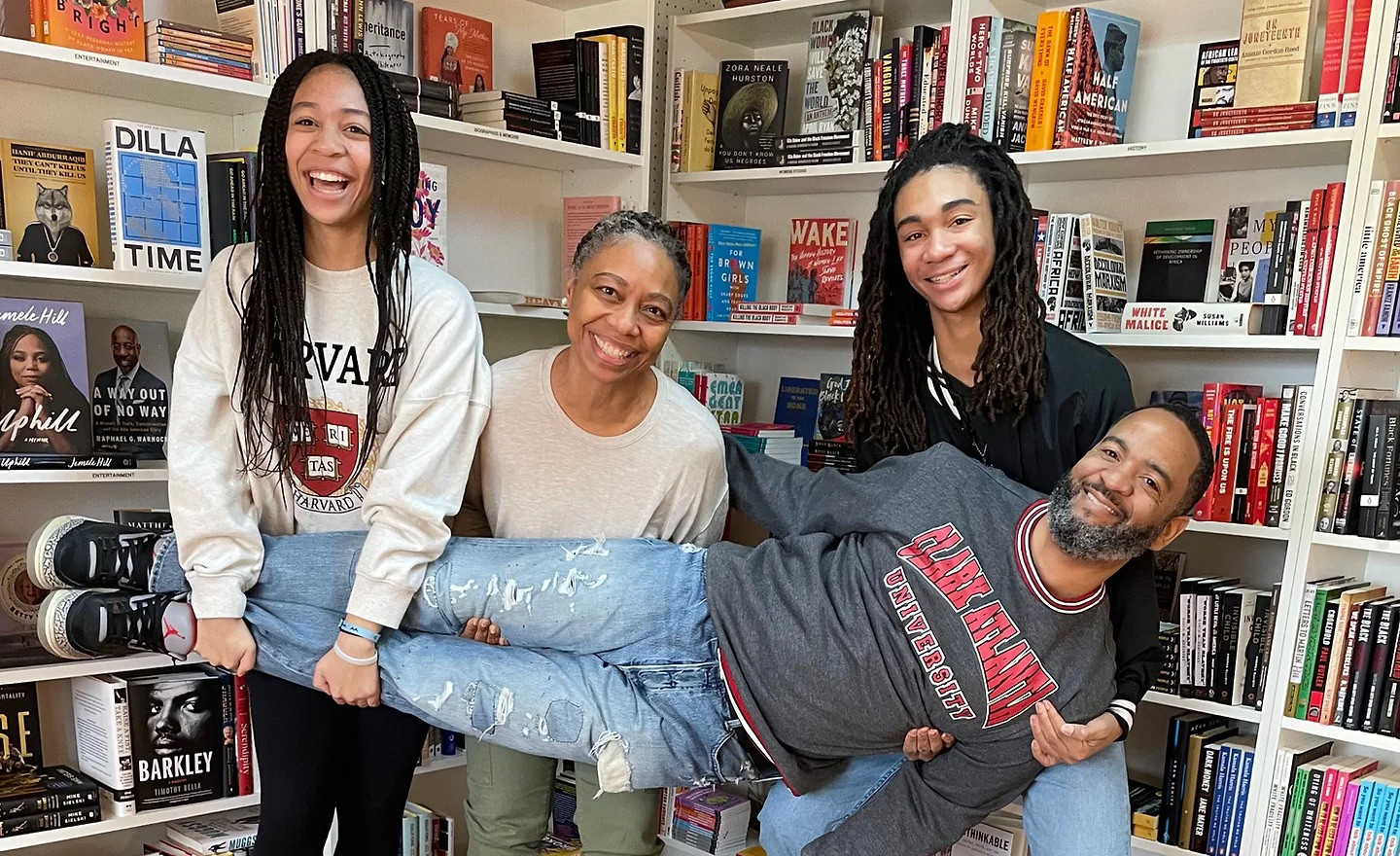Reading time: 5 minutes
Dead birds and plastic straws brought Cash Daniels and Ella Grace Rossen together.
It was 2019 and they both attended Ocean Heroes Bootcamp, a camp that catalyzes young environmentalists, helping them turn empathy into action. As soon as they met at camp, Ella and Cash knew their passions and visions were aligned. How did they each become such strong advocates for our planet earth? Seeing a straw on the beach was the start for Cash. He was seven years old and learned that thousands of animals—like turtles and seabirds—are in danger every year from accidentally ingesting plastic. For Ella, it was finding dead birds, turtles, and tiger sharks on Vero Beach in Florida. How could she walk by and not do something?
The Cleanup Kids
While Ella and Cash worked on conservation in their own communities—Ella in Ajax, Ontario and Cash in Chattanooga, Tennessee—they decided to create their own non-profit after their fateful meeting at Ocean Heroes. The Cleanup Kids was born, a kid-run nonprofit dedicated to engaging other young people in a collaborative effort to clean up our planet. They work in a variety of ways: direct action campaigns, speeches, films, and even meetings with officials who have the authority to make things happen.
In 2021, The Cleanup Kids was one of twenty-five youth-led projects selected to receive an award from the Gloria Barron Prize for Young Heroes, given by the nonprofit Young Heroes Project to those choosing to be a positive force in the world.
The Cleanup Kids are definitely a force. In 2021, they cleaned up over three tons of trash that now won’t make it into the ocean. In 2022, they created the Pollinator Project, dedicated to getting one sponsored pollinator garden in every state in the US. They also kicked off the Aluminum Project, an effort urging government officials and leaders of companies to switch from plastic to aluminum packaging. Using aluminum can actually create a closed-loop system for recycling. (Closed-loop recycling means that all of the materials in a specific manufactured item can be used again and usually for the same exact item. So an entire aluminum can is recycled into another aluminum can.)
Cash | Erin Daniels and Kate Rossen
Recently, Cash has been interviewed on podcasts and TV news reports. He speaks frequently to state representatives about his work cleaning up rivers. Meanwhile Ella and her family sold their house in Canada and are living on a sailboat. On her Instagram page, Ella says, “My parents have been planning this for a really long time. Their hope is to be able to show my siblings and I the things in the ocean that may not be around by the time we are adults.”
Ella and Cash hope to change that prospect. They are the real deal. The turtles and seabirds know it. The sharks know it. (Ella and Cash are both IN LOVE with sharks and know how important they are to maintaining a healthy ocean.) And now we know it too. And we get to know them even better because we interviewed them!
Hi Cash! Hi Ella! Can you tell us about yourselves?
Ella: I’m Ella, I’m thirteen, and I’m originally from Toronto, Canada. Right now my family is living on a sailboat as we travel around the world. At the moment we are in the Caribbean. My family is my mom and dad, a younger sister who is nine, and a brother who is seven.
Cash: I’m Cash, I’m thirteen too, and I live in Chattanooga, Tennessee with my mom, dad, and younger brother who is ten.
Can you describe what drew you to environmentalism in the first place? How did it touch your heart?
Ella and Cash: It’s a similar story for both of us. We have both always cared about the planet and are huge animal lovers. We also both grew up spending lots of time outdoors in nature, and as we did this, we noticed more and more how the places and the things we loved were being destroyed by trash. The waterways we loved had trash; the animals were being entangled in trash. It was then that we both, hundreds of miles and years away from meeting, decided that we wanted to make sure these places and creatures we loved were taken care of, so separately, in our own hometowns, started organizing cleanups to help deal with the messes we were seeing.
How did you meet each other? What brought you together?
Ella and Cash: We originally “met” online via Instagram because we were following a lot of the same conservation organizations. After following each other’s work for over a year, we got the opportunity to meet at Ocean Heroes Bootcamp in 2019, in Vancouver, Canada. We were the youngest participants, and from then on we became inseparable. When we left camp, we would talk on FaceTime and keep in touch that way.
When did you scheme up Cleanup Kids? How did you put it all together?
Ella and Cash: Shortly after we returned home from Ocean Heroes, we created The Cleanup Kids. We knew that what we were doing individually was having an impact in our local areas, so we decided that teaming up and working together, and encouraging other kids to get involved, could increase that impact over a greater area. From there, we just started coming up with ideas on what areas of environmental activism could use attention and focused on those.
Ella and crab| Erin Daniels and Kate Rossen
What is your favorite Cleanup Kids’ initiative?
Ella and Cash: The “Million Piece Pickup,” which we successfully completed last year. This was a really important one for us because one million pieces of trash was a HUGE number, and it was our first real chance to get “Cleanup Kids crew members,” who are kids from around the world, to actively work on a large-scale project together. We are so excited that we not only MET our goal, but we exceeded it, which means that there are over one million LESS pieces of trash that can enter our waterways and hurt our wildlife!!
Cash, what’s your favorite quality of Ella’s? Ella, what’s your favorite quality of Cash’s?
Ella: My favorite quality of Cash’s is his relentless determination. He NEVER gives up. A lot of people would see how big the problems our planet is facing are and give up. Cash sees them and decides to work harder.
Cash: My favorite quality of Ella’s is her creativity. She is always thinking up new ways for us to have more of an impact to help protect the environment and wildlife.
OK, Cash and Ella, onto all things NOT Cleanup Kids. What are some of your favorite things? Favorite books? What makes you laugh? Do you have any ideas about your future? Where will you be? What will you be doing?
Cash: One of my favorite things is my freshwater fish tank. My favorite books are the Harry Potter and The Lord of the Rings series. Watching funny animal videos makes me laugh. For my future I know I would like to continue getting SCUBA certifications so I can go explore more underwater. I really want to do some wreck diving, as well as see the Great Barrier Reef.
Ella: My favorite thing is my cat Moonbeam. I love to read, and one of my favorite series is also Harry Potter. My goal for the future is to continue exploring the world. I want to see everything I can on land and in the water. I want to see it all, especially knowing that with the way our climate and planet are changing, many of these places and animals may not be around by the time I am grown.
What would you like to tell other kids about adventuring? Do you have any advice for them?
Ella and Cash: We want to tell other kids that adventuring can be done anywhere. It doesn’t have to be some distant, far-away place that you travel to. There are so many incredible things to explore in nature, and you might be surprised at what you can find in your own backyard, like discovering a small creature you hadn’t taken the time to notice before.
Our advice is that no matter where you go adventuring, always leave that place better than you found it. Maybe that means picking up a bit of trash you find along the way or helping an animal. Just make sure to leave only footprints wherever you go.
One last question: If kids (or adults for that matter!) want to get involved in some of the Cleanup Kids’ projects, how can they do that?
Ella and Cash: We LOVE having more people get involved! You can check out our website www.thecleanupkids.org or you can send us a message on Instagram.
You might call it the longest running Easter egg hunt in the history of Easter egg hunts. It went on for four years, after all. Only it wasn’t a search for chicken eggs (or are they bunny eggs?), it was for dinosaur eggs. And lots of them.
From 2017 to 2020, paleontologists from the University of New Delhi found ninety-two nesting sites containing 256 egg fossils in the Lameta Formation, an area in the Narmada River Valley in central India. After studying the egg fossils, the paleontologists discovered they belong to a clade of dinosaurs called sauropods. A clade is a group of organisms believed to have evolved from the same ancestors and sauropods are a type of dinosaur with iconic long necks and tails, who are herbivores. Think brontosaurus. The paleontologists were even able to get more specific in their identification—the eggs come from a little-known dinosaur called a titanosaur.
Titanosaur | The Natural History Museum, London
Titanosaurs lived from the Late Jurassic Epoch (163.5 million to 145 million years ago) to the end of the Cretaceous Period (145 million to 66 million years ago). We know of forty species of these super long-necked, stocky-bodied dinosaurs that existed back then. They were possibly the largest of the dinosaurs, some measuring over 120 feet long and weighing 70 tons. That’s ten times as heavy as an elephant. (See image.) They were one of the last groups of dinosaurs to go extinct.
Titanosaur eggs came in six different oospecies (types of dinosaur eggs). They were the size of coconuts and between one and twenty eggs were laid at a time. These groups of eggs, known as clutches, were found in a sort of random formation and partially buried, suggesting these giant dinosaurs housed their eggs in the same way crocodiles do. Because so many clutches were found so close together, it’s clear they had something called colonial nesting behavior, which means they purposefully built their nests in proximity to one another to try to protect the eggs and fend off potential predators. Turtles and some species of birds do this (such as great egrets, cormorants, and brown pelicans, to name a few). Because the land areas that contained nest sites had nothing else dinosaur-related in them, it seems like the titanosaurs laid their eggs in one place and lived in another, which also reinforces the colonial nesting behavior idea: the hatchlings had to live together, which gave them more of a chance to defend themselves. The ones that survived ultimately left the nest area to go live with the older titanosaurs.
James St. John, licensed under CC-BY 4.0 via Scientific Reports
The paleontologists made one VERY exciting find (in the midst of this already exciting find)! Out of the 256 eggs, one of them was not like the others...one of them was unique. It was an ovum-in-ovo egg—or an egg inside another egg. This phenomenon can be seen in bird eggs, but only rarely. What does it mean? A developing egg is pushed back into its mother’s body after a shell starts to form and then makes contact with another developing egg, which then covers it with another shell. (Seriously.) It occurs when the mother is in a state of stress, perhaps caused by disease, lack of food, or unusual temperature changes. Until this excavation, this had never been seen in any dinosaurs, or even any reptiles. This means that titanosaurs probably had the same kind of reproductive system as modern birds, which is a very big-deal discovery.
Meet the Titanosaur
In summary, the mighty titanosaurs laid their eggs like birds, positioned their eggs like crocodiles, built their nests like turtles and—hid them like chickens? (Or like bunnies?) Maybe or maybe not. Either way, these eggs are quite a find!
Super cool dinosaur finder: https://paleobiodb.org/navigator/
Independent bookstores are the backbone of the publishing industry and in honor of the 10th annual Independent Bookstore Day on April 30th, we wanted to shine a spotlight on an indie store that is rising above the current landscape and making a difference.
Black Pearl Books didn’t have an easy start. Katrina Brooks began the online store in November 2019. She also did pop-ups and markets in the Austin, TX area. When COVID-19 hit five months later, all in-person events shut down. Black Pearl’s business momentum slowed down too. Katrina Brooks was worried about surviving, but in June 2020, the social justice movement—already underway—became magnified after the murder of George Floyd. Black Pearl swung to the other end of the pendulum. That month the store received over 10,000 online orders. From that moment forward, it’s evolved like crazy: Katrina’s husband Eric Brooks came on board, they converted their garage into a warehouse, next they rented space from a nonprofit, then moved the store into a building of their own, and finally in August 2022, the only Black-owned independent bookstore in Austin launched their literacy nonprofit Put It In A Book.
Elisha, Katrina, Elijah, and Eric Brooks | Black Pearl Books
Katrina and Eric feel a responsibility as the owners of Black Pearl Books to thoughtfully offer a reading selection curated with three things in mind: diversity, inclusion, and representation. Recently, a fourth thing has become critical for them: making challenged and banned books available to kids.
An American Library Association report from March 2023 shared the sobering news that book bannings in the US had nearly doubled from 2021 to 2022. Black Pearl has started a book club called Redacted Reads Book Club that meets once a month to discuss banned and challenged books.
Put It In A Book is also doing its best to fill in the spaces that are left when books are pulled off shelves. Understanding the meaning behind the nonprofit’s name gives some insight into how powerful and critical it is. Katrina explains in an interview: “Blacks weren’t allowed to read. So the saying would go, if you want to hide something from a Black person, put it in a book. It’s this connotation that Black people don’t read. So I’m taking that and flipping it and making it known that we do read, and not only do we read, but we write our stories. We have stories to share and so it’s a tribute, almost, to ancestors, but it’s also a motivation, I’m hoping, for younger generations to understand where that comes from and to know that their stories matter.”
Christina Soontornvat’s launch of The Tryout | Black Pearl Books
They’ve got an initiative right now called “A Right To Read.” Working with school librarians and teachers, they are facilitating the creation of on-campus book clubs and, at the same time, providing free banned and challenged books so that students can read stories by and about all different kinds of people; the message they want to create is that ALL stories matter. As Black Pearl Books says on its website, their “hope is that by providing titles that spark conversation, understanding, and acceptance, our children will have the courage to live out loud and write their own stories.”
We were lucky enough to interview Katrina about the beginning of her bookstore adventure, the connections that Black Pearl makes with different communities, and more:
Hi Katrina! What prompted you to take the leap and start Black Pearl Books?
Really, it’s been a lifelong cultivation that’s brought me to this point, but it was during a summer road trip that I decided to open a bookstore. We’ve always visited independent bookstores when we’ve traveled, but there was something about the visit to a store in DC that sparked the idea. I don’t know what was different about this time versus the others, except that God’s timing is perfect and that He opens your heart to things when it’s appropriate. All that was required of me was to be obedient.
Do you get a lot of teachers and librarians coming into the store to look for books for their academic programs?
Yes, we get a lot of educators, but we have a wide range of customers from all over the city and different backgrounds that come into the store.
Black Pearl Books seems more like a community than a store, if that makes sense. A community that shines a spotlight on empathy, that values books as both mirrors and doors, that emphasizes a safe and inclusive environment. Does that sound right? What kinds of specific experiences reinforce that sense of connection?
Black Pearl Books and the Greater Austin Reading Coalition
Yes, that is correct. As mentioned, we have a diverse group of customers so the connections we build look different for different reasons. We are a community bookstore for some local neighborhoods. They pop in regularly with their children or on their way home from work, to pick up a book. We are a Black-owned bookstore so when people come in and make comments that they feel seen, or it’s nice to not have to ask where the Black section is, we are building community.
We are building an even different community with our nonprofit partnerships, one where we are working together to improve literacy in the greater Austin area. We have a community of amazing local authors whom we are always in conversation with as we help to support their art.
Our safe and inclusive environment builds a community that allows people to feel comfortable talking about their experiences and how they can be allies to others. We are not all things to all people, but in fact, different things to different people, which enhances our approach to diversity, inclusion, and representation. At the core of it all, we are authentic.
Black Pearl Books and the Greater Austin Reading Coalition
What have been some of your favorite collaborations?
100 Black Men of Austin. We’ve partnered with the group on several events and they have all been impactful in the community.
What recent books have you read in your Redacted Reads Book Club?
Our last three have been The Bluest Eye by Toni Morrison, In the Dream House by Carmen Maria Machado, and Melissa by Alex Gino.
A totally different kind of question: what are some of your favorite books? Kids primarily read this newsletter (or their parents) and we’d love some recommendations for children’s books!
Almost anything by Jason Reynolds!
Finally, how can people outside of Austin support Black Pearl Books and Put It In A Book?
They can make a donation to the nonprofit through our Go Fund Me page or Amplify Austin page.
Thank you for this interview, Katrina, and for all of the work that you and Black Pearl Books do!








